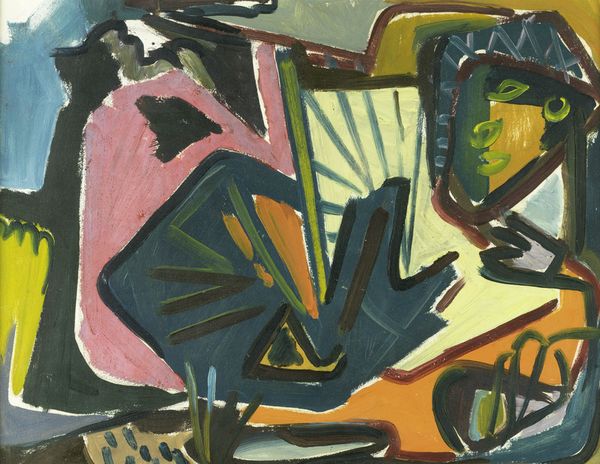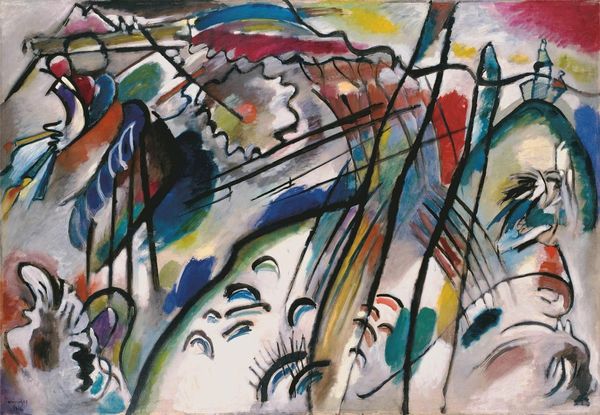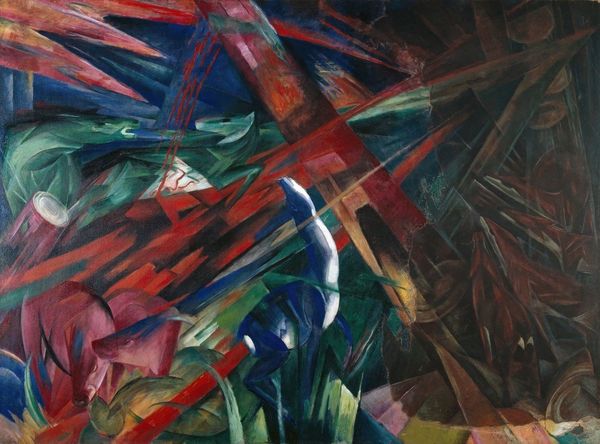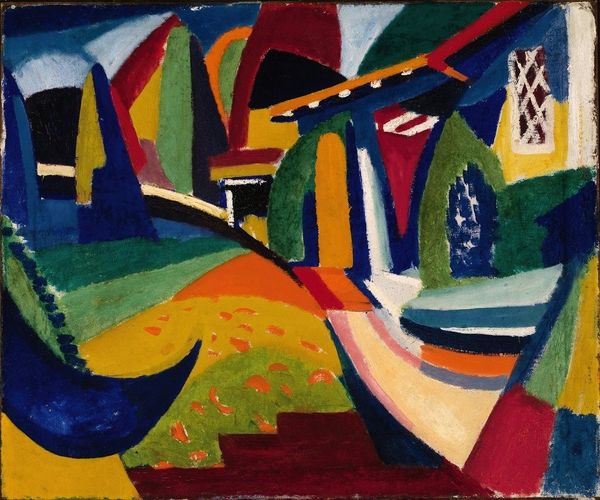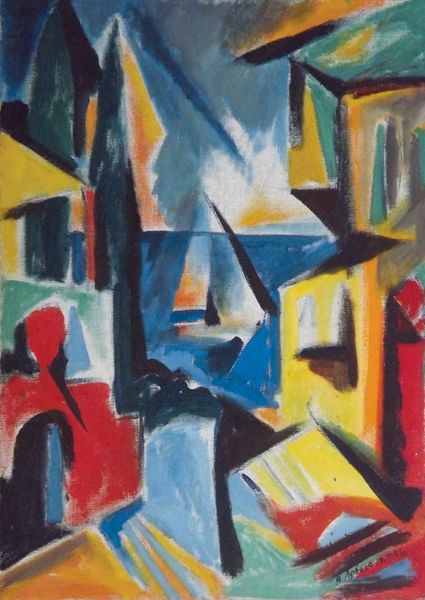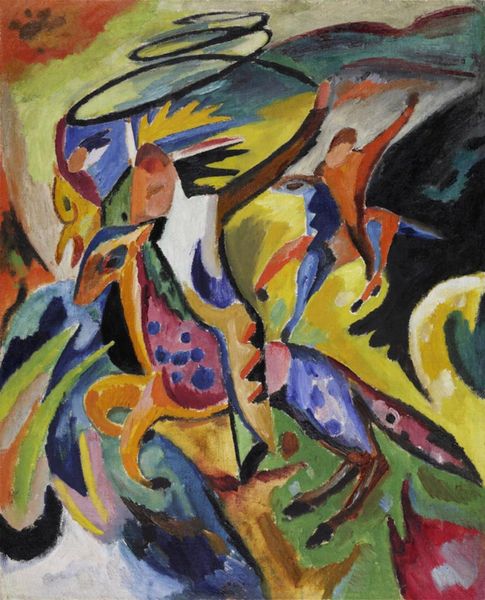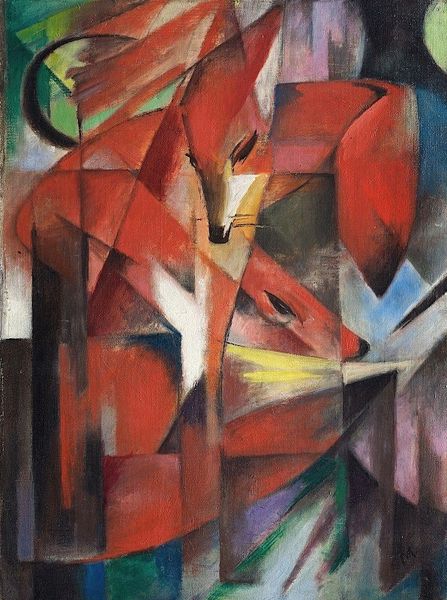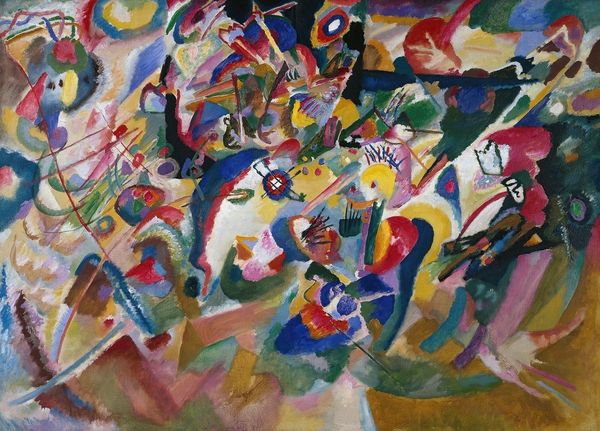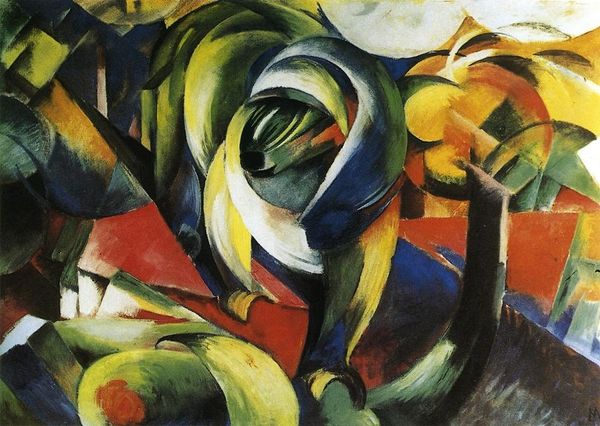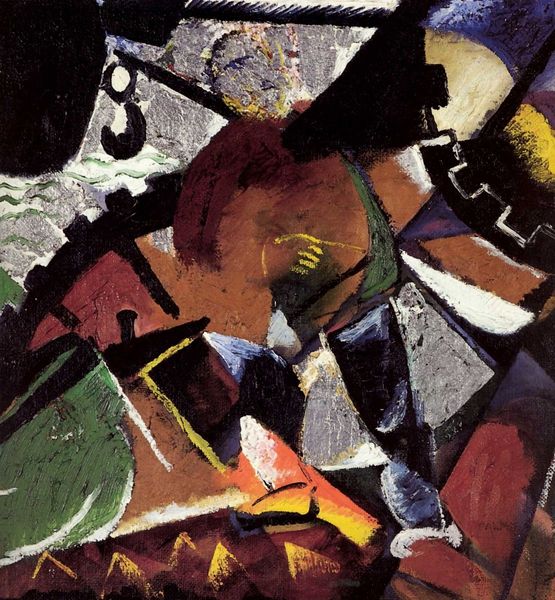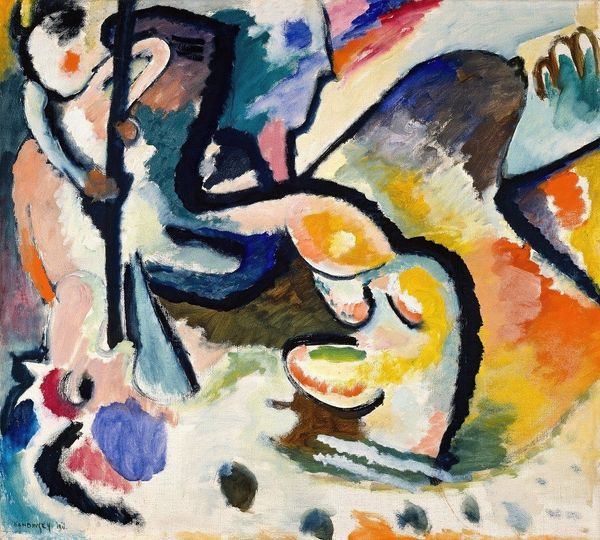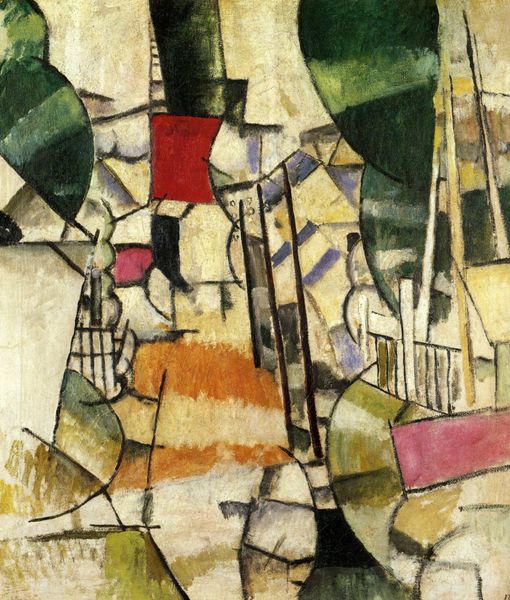
Copyright: Public Domain: Artvee
Curator: This is Franz Marc's "The Wolves", painted in 1913. Marc, of course, a key figure in German Expressionism. Editor: It's so dynamic. The shapes and colors—it's unsettling but captivating. What immediately strikes me is this raw energy conveyed through color and form; there is a jagged feel across the canvas. Curator: It's precisely that tension he seeks. Looking at his practice within the Blue Rider group, Marc often aimed to depict animals as possessing a certain spiritual purity lost to humanity. There is so much anxiety present in this Expressionist canvas. It offers insight into Marc's philosophy concerning the connection between humanity and nature amidst a backdrop of heightened political and social unrest at the time. Editor: Focusing on his materiality—the thickness of the oil paint creates this textured surface. The bold colors, the almost crude application of the paint, challenge established notions of beauty and craftsmanship. Marc is literally getting his hands dirty in the process. Curator: Right. Consider how these aren't idealized representations. The fragmentation almost foreshadows the horrors of World War I. It speaks volumes about the disillusionment many felt towards the established order. These weren’t the faithful companions that are part of so many other historical narratives involving humans and their animal counterparts; it's interesting how he inverts expectations. Editor: The color palette really draws my attention to the violent angles and fractured space of the image itself. We tend to ignore these features but doing so here is to look away from some central qualities of its creation. Curator: Yes, and understanding Marc’s context, his fascination with animal perspectives allows us to analyze themes of alienation, industrialization, the role of propaganda and power, and the place of mankind in the ever changing 20th century. Editor: I feel the physicality of the piece speaks volumes— the density of paint, the conscious crudeness. Curator: Exactly. Considering that pre-war moment enriches how we approach abstraction's emergence. It highlights a yearning for radical change across European society and visual production at this crucial moment in history. Editor: Studying it this way allows us to understand its layered approach; it brings into focus some innovative production methods. Curator: Indeed. And this fresh context expands the possibilities for current artistic discussions concerning gender, material and ecology within art-making practices across time.
Comments
No comments
Be the first to comment and join the conversation on the ultimate creative platform.
